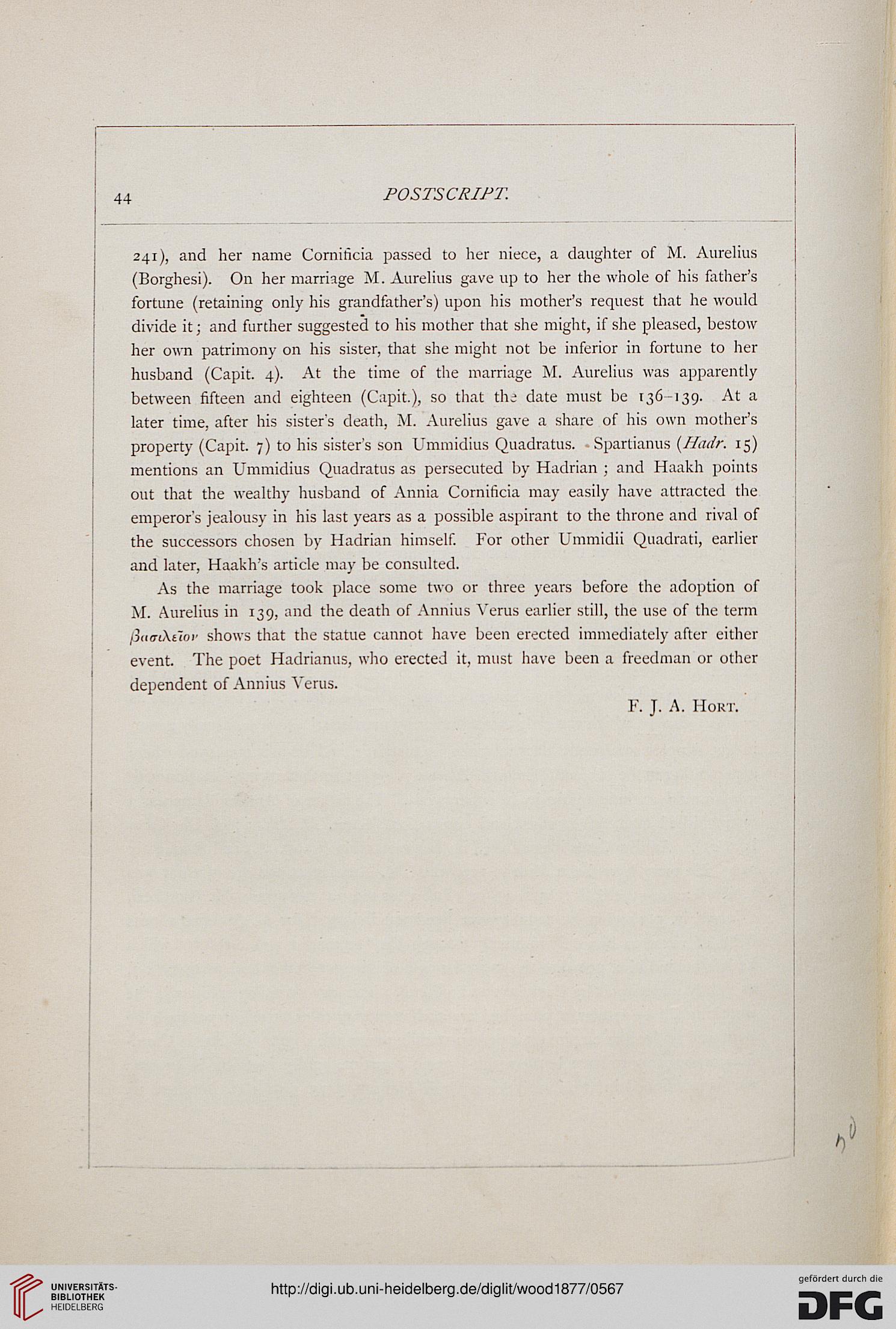44
POSTSCRIPT.
241), and her name Cornificia passed to her niece, a daughter of M. Aurelius
(Borghesi). On her marriage M. Aurelius gave up to her the whole of his father's
fortune (retaining only his grandfather's) upon his mother's request that he would
divide it; and further suggested to his mother that she might, if she pleased, bestow
her own patrimony on his sister, that she might not be inferior in fortune to her
husband (Capit. 4). At the time of the marriage M. Aurelius was apparently
between fifteen and eighteen (Capit.), so that the date must be 136-139. At a
later time, after his sister's death, M. Aurelius gave a share of his own mother's
property (Capit. 7) to his sister's son Ummidius Quadratus. Spartianus [Hadr. 15)
mentions an Ummidius Quadratus as persecuted by Hadrian ; and Haakh points
out that the wealthy husband of Annia Cornificia may easily have attracted the
emperor's jealousy in his last years as a possible aspirant to the throne and rival of
the successors chosen by Hadrian himself. For other CJmmidii Quadrati, earlier
and later, Haakh's article may be consulted.
As the marriage took place some two or three years before the adoption of
M. Aurelius in 139, and the death of Annius Yerus earlier still, the use of the term
(Jaatktiov shows that the statue cannot have been erected immediately after either
event. The poet Hadrianus, who erected it, must have been a freedman or other
dependent of Annius Yerus.
F. J. A. Hort.
POSTSCRIPT.
241), and her name Cornificia passed to her niece, a daughter of M. Aurelius
(Borghesi). On her marriage M. Aurelius gave up to her the whole of his father's
fortune (retaining only his grandfather's) upon his mother's request that he would
divide it; and further suggested to his mother that she might, if she pleased, bestow
her own patrimony on his sister, that she might not be inferior in fortune to her
husband (Capit. 4). At the time of the marriage M. Aurelius was apparently
between fifteen and eighteen (Capit.), so that the date must be 136-139. At a
later time, after his sister's death, M. Aurelius gave a share of his own mother's
property (Capit. 7) to his sister's son Ummidius Quadratus. Spartianus [Hadr. 15)
mentions an Ummidius Quadratus as persecuted by Hadrian ; and Haakh points
out that the wealthy husband of Annia Cornificia may easily have attracted the
emperor's jealousy in his last years as a possible aspirant to the throne and rival of
the successors chosen by Hadrian himself. For other CJmmidii Quadrati, earlier
and later, Haakh's article may be consulted.
As the marriage took place some two or three years before the adoption of
M. Aurelius in 139, and the death of Annius Yerus earlier still, the use of the term
(Jaatktiov shows that the statue cannot have been erected immediately after either
event. The poet Hadrianus, who erected it, must have been a freedman or other
dependent of Annius Yerus.
F. J. A. Hort.




